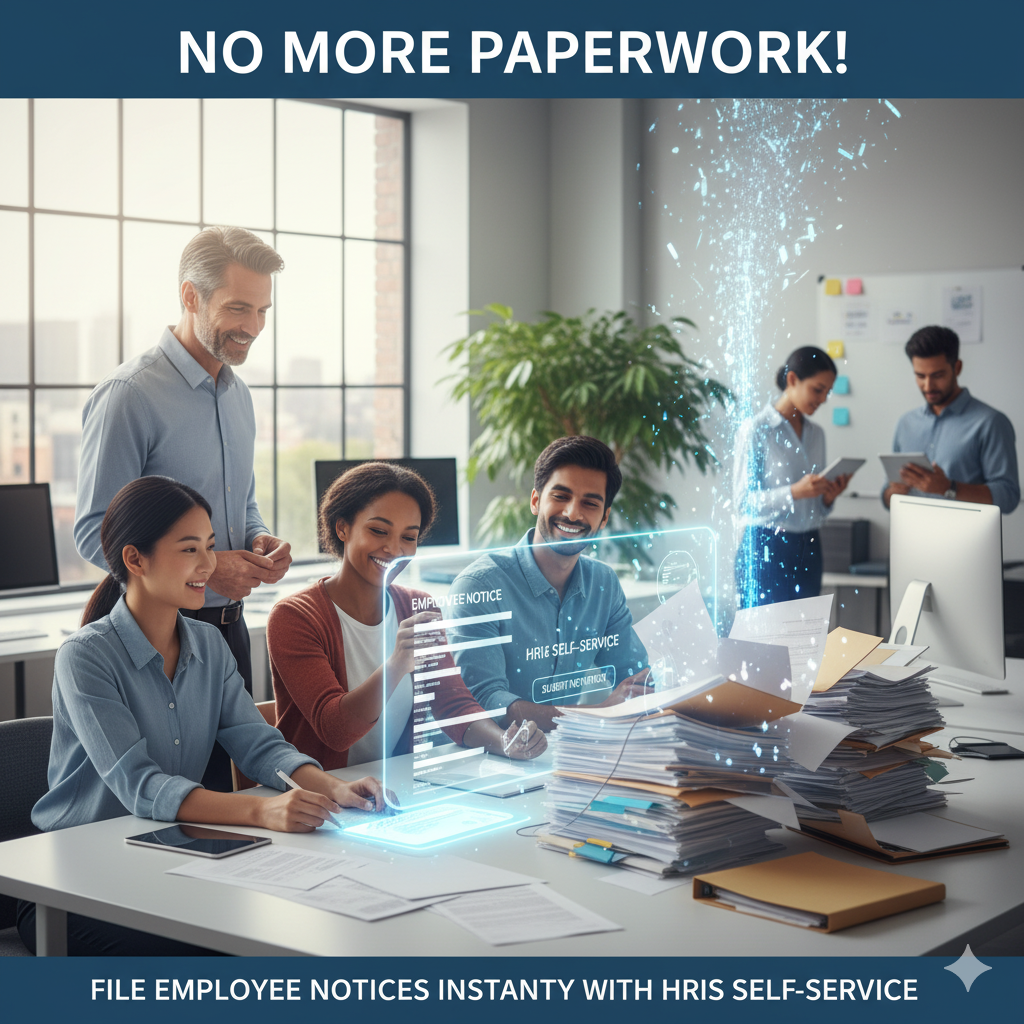Paper forms, manual signatures, and back-and-forth approvals — traditional HR workflows are slow and prone to errors. Whether it’s a leave request, overtime notice, or schedule adjustment, employees often waste hours chasing approvals or waiting for HR updates.
Fortunately, modern Human Resource Information Systems (HRIS) have changed that. With Employee Self-Service (ESS) features, filing notices is now instant, digital, and hassle-free.
What Is HRIS Employee Self-Service?
Employee Self-Service (ESS) is a feature within your HRIS platform that allows employees to manage and submit their own HR-related transactions online — anytime, anywhere.
Instead of handing over physical forms, employees can log in to their HRIS portal and:
- File leave, overtime, or travel notices
- Update personal and contact details
- Download payslips and tax forms
- Track approval status in real time
In short, ESS empowers employees while reducing administrative work for HR teams.
How HRIS Self-Service Filing Works
Here’s how a modern HRIS simplifies notice filing in just a few clicks:
- Login to the HRIS Portal – Secure access using employee credentials.
- Choose the Type of Notice – Leave, overtime, undertime, or official business.
- Enter the Details – Dates, reasons, attachments, or supervisor info.
- Submit Instantly – The system routes the notice to the assigned approver automatically.
- Track Status in Real-Time – Employees get notified once approved or denied.
No forms. No printing. No delays.
Benefits of Filing Employee Notices via HRIS Self-Service
- 100% Paperless Transactions
Say goodbye to stacks of printed forms. All notice filings are stored securely in your HRIS database — easy to access, review, and audit anytime.
- Faster Approvals
With automated workflows, managers receive instant notifications and can approve or reject requests directly in the system, cutting turnaround time by up to 80%.
- Improved Accuracy
Digital forms reduce human errors like incomplete fields or miscalculations, ensuring consistent and compliant HR documentation.
- Empowered Employees
Employees can manage their own requests and see their status anytime. This transparency builds trust and minimizes HR inquiries.
- Better HR Efficiency
HR teams no longer waste hours encoding manual forms — the system automatically logs, tracks, and archives each transaction.
Why Your Business Needs HRIS Self-Service Now
Whether your company has 30 or 3,000 employees, manual HR processes don’t scale.
A Smart HRIS with Self-Service Filing not only improves operational speed but also:
- Supports remote and hybrid work setups
- Enhances data accuracy for payroll and attendance
- Strengthens employee engagement
- Reduces HR overhead costs
By adopting ESS, HR departments shift from paper-pushers to strategic partners in business growth.
How to Implement HRIS Self-Service Successfully
- Choose an HRIS with a User-Friendly Interface – Employees should find it intuitive to submit and track notices.
- Train Employees and Managers – Conduct onboarding sessions and share guides for smoother adoption.
- Customize Workflows – Align the HRIS approval chain with your company’s hierarchy.
- Communicate Clearly – Encourage employees to use self-service regularly by explaining its benefits.
- Monitor and Optimize – Track usage data to identify areas for process improvement.
Conclusion
Manual filing is a thing of the past. With HRIS Employee Self-Service, employees can file notices instantly, HR can approve faster, and your company can operate more efficiently than ever.
It’s time to ditch the paperwork and embrace a smart, digital HR future — where every notice is just a few clicks away.




